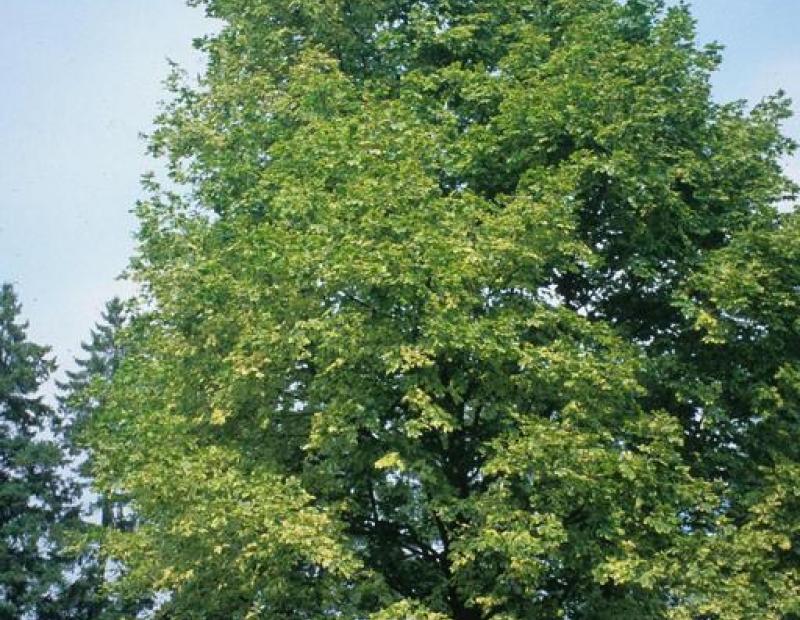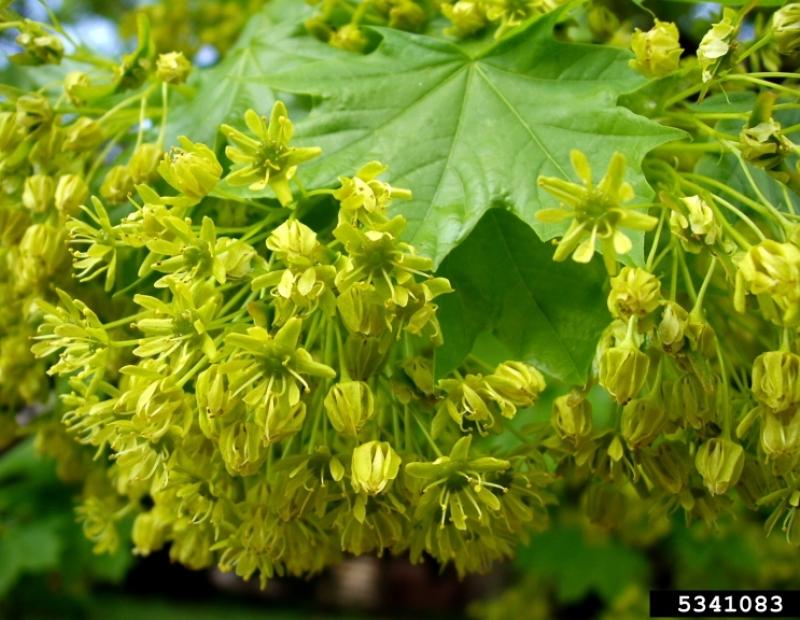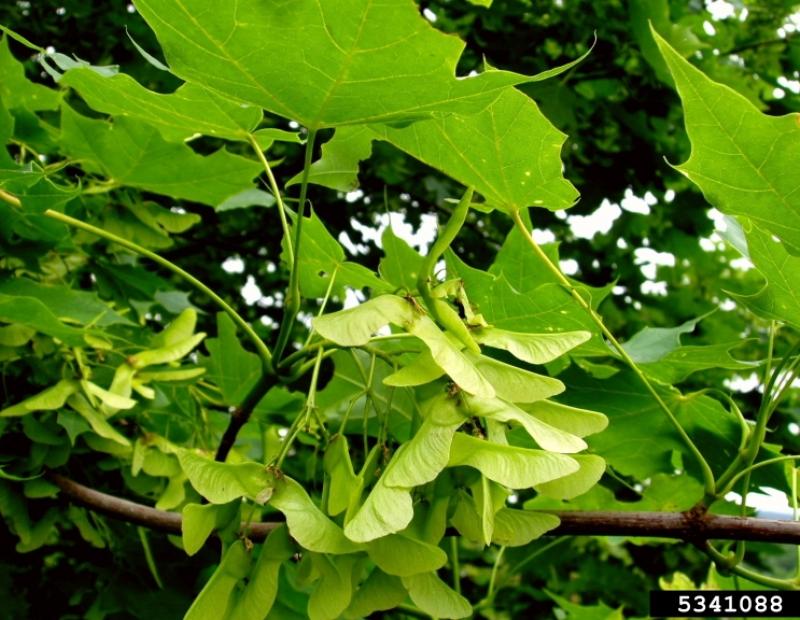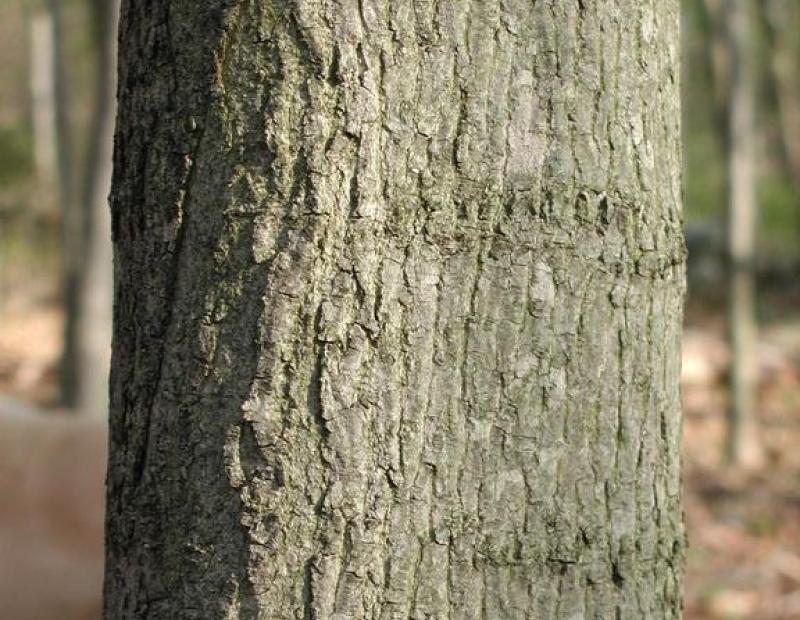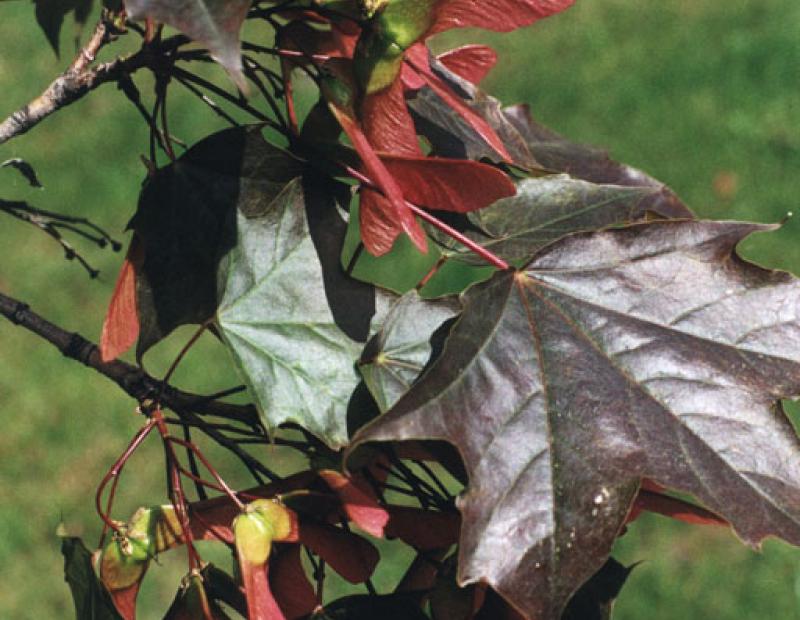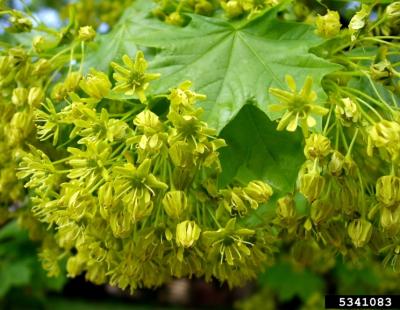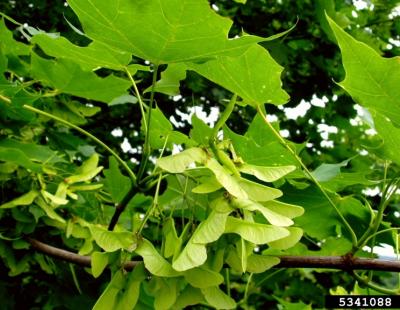- Terrestrial Plants
- Tree
Norway maple shades out native trees and produces chemicals that inhibit the growth of other species (allelopathy).
Norway maple is a deciduous tree native to continental Europe and Western Asia. The species was introduced to the United States in 1756 by a famous Pennsylvania botanist, John Bartram. Since its introduction, Norway maple has been planted as a shade tree along urban streets and in parks and yards for its attractiveness and resistance to disease. In many areas, Norway maple has escaped into surrounding forests where it has become invasive.
Norway maple can be found in disturbed habitats, forest edges, and in forests. The tree is fast-growing, adapted to many soil types, and tolerant of shade. Norway maple is widespread and considered problematic in the Lower Hudson Valley.
Reproductive buds form during the summer, overwinter, and open during the spring. Seeds germinate in the spring. Yellow-green flowers appear in April and May and are pollinated by insects. The winged fruits are dry, called samaras, and are dispersed by the wind during the fall.


